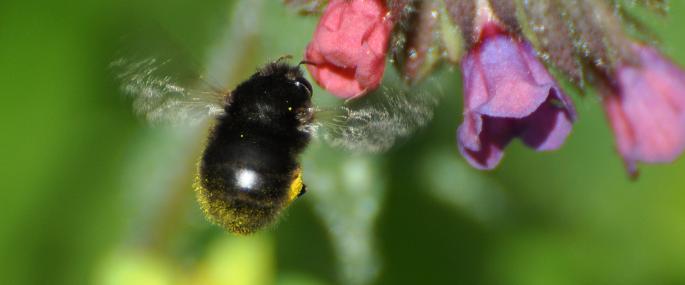I'd heard of biodynamic farming and gardening but I admit I didn't know much about it until I visited a local biodynamic farm last summer. The farm is on the salt marshes, and wandering around it on a blowy august day, it was interesting to learn about this different approach to growing things and keeping animals.
So what is a biodynamic farm? Basically, biodynamic farming means that the entire farm is seen as an organism, with different parts of it forming a greater whole. Biodynamics also recognises the importance of the cosmos, which is seen to exert an influence on plant and animal health. Biodynamics is more than organic, it's sort of organic-plus. Animals are treated with homeopathic medicines and all sowing and planting is done to an astrological calendar. Compost is prepared with herbal and mineral additives, and field sprays are created by burying powdered quartz in cows' horns (while the quartz is in the soil, it's seen to be transformed by cosmic forces. Then it's dug up when the spray is ready to be used).

The concept of biodynamics was first developed in the early 1920s by Austrian writer, educator and social activist Dr Rudolf Steiner - and biodynamic farmers, gardeners and growers have to follow standards set by an organisation called Demeter International if they are to obtain certification (like the standards set for organic growing, but much more).
On the farm, the first thing I saw was the sheep grazing out on the salt marshes. These are North Ronaldsay sheep, chosen because they were considered close to our ancient breeds i.e. before generations of selective breeding produced modern sheep...
After a walk along the sea wall (where, just visible in the distant marshes, I glimpsed the wreck of the Radio Caroline ship - a sort of unusual pirate wreck!) it was time to visit the celestial garden. This is where biodynamic gardening takes place. The garden is in harmony with the sky; 12 raised beds have been planted representing the 12 zodiac constellations and each bed is timed to flower during a particular zodiac sign. It's true that everything was fairly overgrown in this area but I did love to see that the beds have been designed to provide forage for bees throughout the year.

I suppose I was most interested of all to see the beekeeping here. To meet biodynamic standards, hives must be made of natural materials (wood, straw or clay) and the bees have to be left to build a natural comb i.e. not on the wax foundation found in conventional hives. On the farm, the hives were of the Sun Hive type, (which are like traditional skeps held together with wooden inserts). They're made of rye straw and have an upper part of removable wooden arches inside where the honey is stored...
Sun Hives encourage the bees, including the queen, to move everywhere (in conventional hives the queen is prevented from laying eggs in areas where honey is to be harvested). These hives are also placed at least 2.5 metres (8 feet) from the ground - the idea being that it's natural for bees to nest in high places.
Some of the practices well-known to beekeepers are forbidden in biodynamic beekeeping, for example, queens cannot be reared artificially. There are rules about supplementary feeding for bees, too. This feed can't be the usual sugar paste or syrup, but preparations with honey (and with camomile tea and salt added) that must come from a Demeter source. Also if a colony is weak, then Demeter standards state that its loss should be accepted i.e. because it's natural selection at work.
Although I'm all in favour of bees being kept as naturally as possible, I like to give my bees more of a helping hand than is possible with biodynamic beekeeping. After all, bees have got so much stacked against them in today's environment, such as lack of forage, pesticides and new bee diseases.
So, I'll be honest, although I found the farm fascinating, I'm not a convert to biodynamics. But given that most farms around here are the large arable, industrial, non-organic farms, it really made a refreshing change to see something different like this.


















